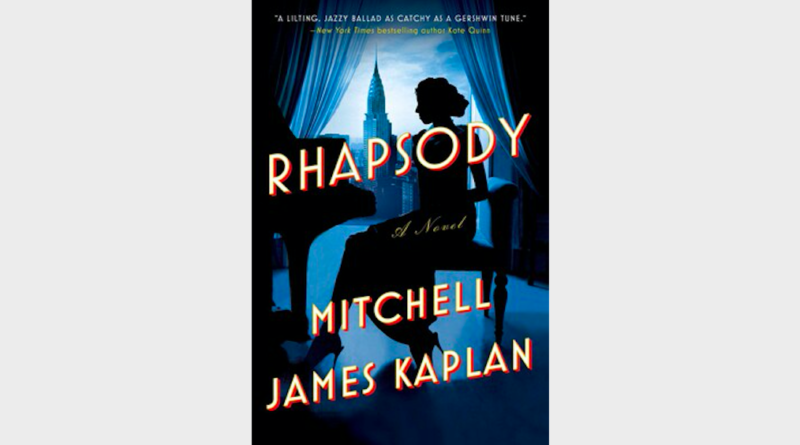REVIEW: ‘Rhapsody,’ a new novel about Kay Smith and George Gershwin by Mitchell James Kaplan
Image courtesy of Gallery Books / Provided by official site.
Mitchell James Kaplan’s Rhapsody is an engaging, thoughtful retelling of the life of Kay Smith, the 20th-century pianist and composer. The book, a work of historical fiction, tracks her life from young adulthood to her eventual marriage with Jimmy Warburg to her interactions with many musicians and artists in the heyday of the Big Apple’s Jazz Age. There are side trips to Paris, Connecticut and Reno, Nevada, but the heart of the novel is set in Manhattan and its many music venues — everything from the Cotton Club to the Broadway district.
As portrayed in the book, an important figure in Swift’s life is George Gershwin, the beloved composer of “Rhapsody in Blue,” a piece of music that entrances Swift and sets her love affair with Gershwin in motion. Warburg and Swift, according to the book, have a marital understanding about taking lovers on the side. Warburg has apparently taken those liberties, and this allows Swift to enjoy a long-lasting relationship with Gershwin. At times within these 300-plus pages, this triangle of love and adoration becomes prickly and difficult, which is to be expected. But the unifying quality of these multiple relationships is music and its power to entice, entertain and ultimately heal.
Swift, as a character, is fascinating. She is living a momentous, privileged life that is framed by large global events: women gaining the right to vote in 1920, World War I and the eventual rise of Adolf Hitler, the stock market crash and resulting Great Depression, and the advent of talkies in Hollywood. Broadway musical theater is also going through a transformation, from vaudevillian acts to revue-style shows to eventual narrative-driven vehicles.
Swift is perfectly suited for these big changes because she’s an expert pianist who soaks up inspiration from Gershwin and others. Her playing of the classics is perfectly realized, including early in her career when she performs with a trio in salon settings. Eventually, in the book, she starts to pen original compositions, some of which gain traction and earn an audience. Of course, her relationships with Warburg, her husband, and Gershwin, her lover, complicate this songwriting. She is clearly inspired by Gershwin, but she simultaneously forms a writing duo with her husband. The personal and professional blend together, much to her delight and much to her consternation.
Throughout Kaplan’s telling of this tale, there are many important figures who move in and out of the narrative. Duke Ellington is a character, so is Maurice Ravel. Fats Waller makes an appearance, so does Libby Holman and, of course, Ira Gershwin. These supporting characters add a richness to the story and also allow Kaplan to offer commentary on the important issues of race, gender, sexuality, class and religion.
Perhaps the best quality of Rhapsody, which is now available from Gallery Books, is how Kaplan is able to take the experience of listening to music and translate that feeling to words. He jumps from one sense to another with such ease, and although there is no auditory accompaniment to these pages, it’s almost as if the notes jump off the page. That’s a hard task for an author to achieve, but he’s able to rhapsodize about these rhapsodies with skillful aplomb.
There are two important works that receive the most time in the spotlight in the book: Gershwin’s “Rhapsody in Blue,” which first attracts Swift to the composer, and then the show “Porgy and Bess,” which defies easy categorization (opera or musical?) and isn’t met with critical favor during its initial run. It would take years, even generations, for the Broadway community and opera community to come around on this landmark work — evidence of which can be found in the recent Metropolitan Opera production and the Broadway version that starred Audra McDonald.
Rhapsody is a special treat for lovers of music, especially appreciators of Swift’s contributions, Gershwin’s compositions and the ins and outs of Jazz Age New York City. It’s a solid biographical tale told with creativity, skill and boundless energy — kind of like a good jazz tune.
By John Soltes / Publisher / John@HollywoodSoapbox.com
Rhapsody by Mitchell James Kaplan. 352 pages. Gallery Books. Click here for more information.


For a response to this book from the Kay Swift Trust, see http://www.kayswift.com